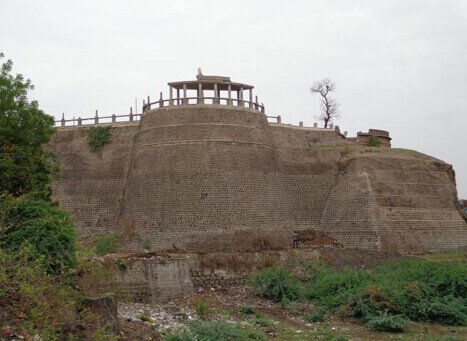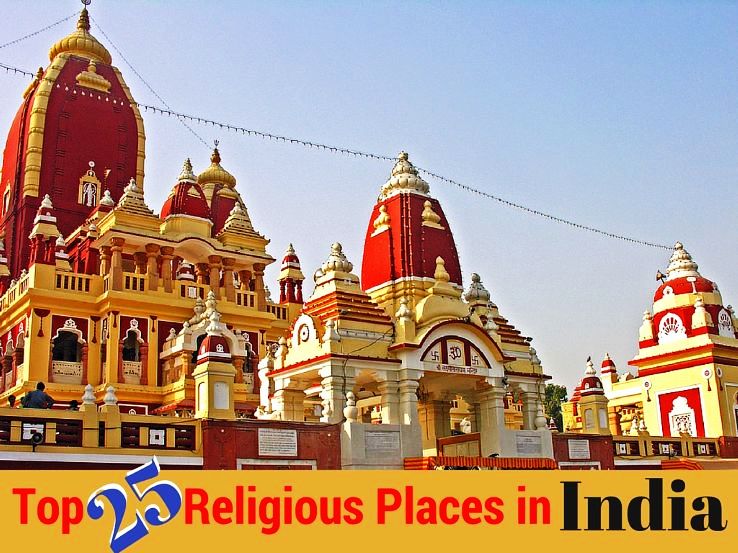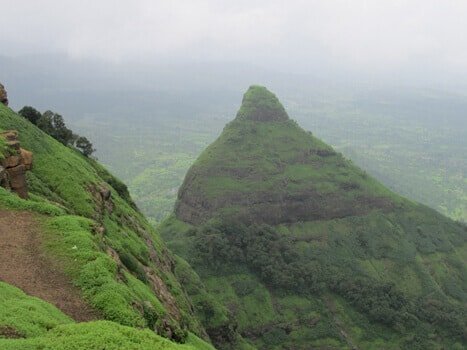Akola Fort stands tall in Maharashtra. It’s a symbol of history and strength.
This ancient fort has witnessed many significant events. Located in the heart of Akola city, it serves as a reminder of the region’s rich past. Built during the medieval period, the fort has a unique architectural style. Its walls and structures tell tales of bravery and strategy.
Visitors often feel a sense of awe while exploring its grounds. The fort’s presence is a testament to the skill and craftsmanship of its builders. Whether you are a history enthusiast or a curious traveler, Akola Fort offers a glimpse into the vibrant history of Maharashtra. Dive into its stories and discover the marvels that lie within its walls.

Credit: en.wikipedia.org
Majestic History
The Akola Fort stands as a testament to India’s rich and diverse history. Its majestic past is steeped in captivating stories of valor, architecture, and cultural significance. As you wander through its ancient corridors, you can almost hear the echoes of bygone eras.
Origins And Founders
Who built this magnificent structure? The Akola Fort, also known as Asadgad Fort, was constructed in the late 17th century. Its origins trace back to the reign of Aurangzeb, one of the most influential Mughal emperors.
Imagine walking in the shoes of the builders who laid the first stone. The fort’s robust walls and strategic design reflect the foresight of its founders. Aurangzeb recognized the fort’s potential to safeguard the region and asserted his dominance. This decision was pivotal, as it transformed Akola into a significant military and administrative hub.
Historical Significance
Why does the Akola Fort matter today? Its historical significance extends beyond its walls. The fort witnessed numerous battles and served as a crucial stronghold during the Mughal Empire’s expansion.
One can’t help but marvel at the strategic importance of Akola Fort. It provided a vantage point to monitor enemy movements and served as a refuge during turbulent times. The fort’s design showcases advanced military architecture, with features like:
- High ramparts
- Moats
- Secret escape routes
- Watchtowers
These elements underscore the ingenuity of its builders and the significance placed on defense mechanisms during that era. As you explore the fort, consider how its presence influenced the region’s history and the lives of those who resided within its walls.
Have you ever wondered what it would be like to defend a fort? The Akola Fort offers a glimpse into the lives of soldiers and commanders who stood guard, protecting their territory with unwavering dedication.
Today, Akola Fort stands as a reminder of the resilience and strategic brilliance of our ancestors. It’s not just a structure; it’s a symbol of our heritage and a source of inspiration for future generations.
Next time you visit a historical site, think about its origins. Consider how its significance shaped the world we live in today. What stories do its walls whisper to you?
Architectural Marvels
The Akola Fort stands as a testament to India’s rich architectural heritage. This historic fort showcases a blend of strength, beauty, and intricate design. Each corner of the fort tells a story of the past and reflects the craftsmanship of ancient builders. Let’s delve into the architectural marvels that make Akola Fort an iconic structure.
Design Elements
Akola Fort features a blend of Mughal and Maratha design elements. Its grand gateways are adorned with intricate carvings. Stone walls exhibit detailed patterns. The fort’s layout incorporates both defensive and aesthetic aspects. Courtyards within the fort provide open spaces. These areas were used for gatherings and ceremonies.
Engineering Techniques
The fort’s construction demonstrates advanced engineering techniques. Builders used locally sourced stone and materials. The walls are designed to withstand attacks. They are thick and sturdy. The fort includes well-planned drainage systems. These systems prevent water accumulation during rains. The strategic placement of watchtowers offers clear views of the surroundings. This ensured the fort’s defenses were always ready.
Strategic Importance
Akola Fort, located in the heart of Maharashtra, is an architectural marvel that holds significant strategic importance. Its location and structure made it a vital asset in historical military campaigns. Let’s delve into why this fort was so strategically important.
Military Role
Akola Fort played a crucial role in several military campaigns due to its robust defense mechanisms. The fort’s thick walls and strategically placed bastions were designed to withstand heavy artillery. Its high vantage points allowed soldiers to spot enemies from afar, providing a tactical advantage. The fort’s layout facilitated quick troop movements and efficient defense tactics.
Imagine standing on the fort’s ramparts, looking over the vast expanse. You can almost hear the clatter of armor and the roar of battle. This fort was more than a structure; it was a formidable military base. Soldiers stationed at the fort could quickly assemble and deploy forces, making it a key location for defending the region.
Geographical Advantage
Beyond its military role, Akola Fort’s geographical location offered unparalleled advantages. Nestled in the Deccan Plateau, the fort overlooked significant trade routes. This positioning allowed control over the movement of goods and resources, making it economically strategic.
Have you ever considered how geography shapes history? The fort’s elevation provided natural defenses, while its proximity to rivers ensured a steady water supply. This combination of factors made it nearly impregnable. The surrounding terrain was difficult for enemy forces to navigate, adding another layer of security.
As you explore the fort, you can still see the remnants of its strategic design. Every stone and pathway tells a story of its significance. Visiting Akola Fort isn’t just about seeing an old structure; it’s about understanding the strategic genius that once made it a focal point of power and control.
What other historical sites have you visited that offer similar strategic insights? Consider the blend of military prowess and geographical advantages the next time you explore a historical landmark. It adds a fascinating layer to your experience.
Cultural Influence
Akola Fort stands as a testament to India’s rich history and cultural influence. The fort’s architecture reflects ancient craftsmanship and traditions.
The Akola Fort is not just a historical monument; it is a living testament to the rich cultural heritage of the region. This fort, with its sturdy walls and majestic gates, has stood the test of time, reflecting the diverse cultural influences that have shaped the area. The cultural significance of Akola Fort extends beyond its architectural splendor, deeply impacting the local traditions and the community that surrounds it.Local Traditions
Local traditions at Akola Fort are a vibrant tapestry woven with threads of history and culture. The fort is the backdrop for numerous festivals and ceremonies, which draw crowds from nearby villages and towns. For instance, the annual fair held at the fort premises is a grand celebration where traditional music and dance performances take center stage. You can witness folk artists in colorful attire, singing songs that have been passed down through generations. Local artisans also display their crafts, from handwoven textiles to intricate pottery, showcasing the region’s artistic heritage. Engaging with these traditions offers a glimpse into the soul of Akola, making the fort a crucial part of the area’s cultural identity.Impact On Community
The impact of Akola Fort on the community is profound. It serves as a hub for local gatherings, reinforcing social bonds and community spirit. During my visit, I spoke with a local elder who shared how the fort has been a place for storytelling sessions, where elders narrate tales of bravery and wisdom to younger generations. This practice keeps the history alive and instills a sense of pride in the community. Moreover, the fort has become a focal point for educational trips. Schools often organize visits, allowing students to learn history in an interactive way. This hands-on learning experience not only enriches their knowledge but also fosters a deeper connection to their heritage. Imagine standing within the fort’s walls, feeling the weight of history around you. How does this experience shape your understanding of the past and its influence on the present? By preserving and promoting the Akola Fort, the community ensures that its cultural roots remain strong, nurturing a sense of identity and belonging among its people. In what ways do you think your local historical sites impact your community? Reflecting on this can offer new insights into the importance of preserving our shared heritage.Legend And Lore
The Akola Fort, nestled in the heart of Maharashtra, is not just an architectural marvel but also a treasure trove of enchanting tales. The fort’s walls echo with stories from a time long past, each corner whispering secrets of heroism, love, and betrayal. Let’s delve into the fascinating ‘Legend and Lore’ of Akola Fort, where the lines between history and folklore blur, creating a rich tapestry of myth and reality.
Folklore
Do you ever wonder what secrets the ancient stones of Akola Fort hold? Local folklore is brimming with tales that spark the imagination. One popular story speaks of a hidden treasure buried deep within the fort’s grounds. It’s said that those who seek it are often met with mysterious occurrences, almost as if the fort itself is guarding its secrets.
Imagine walking through the fort on a moonlit night, with the soft rustle of leaves and the distant call of nocturnal birds. The atmosphere is ripe for storytelling. Many villagers claim to have seen spectral figures roaming the ramparts, their presence felt more than seen. These stories, passed down through generations, add a layer of mystique to the fort.
Famous Legends
One of the most famous legends associated with Akola Fort is that of the brave queen who once ruled from its stronghold. According to the legend, she was known for her unparalleled wisdom and strength. During a time of war, it is said she led her troops to victory, defending the fort with unmatched valor. Her spirit is believed to still inspire the fort’s defenders, a symbol of resilience and courage.
Another captivating legend involves a secret tunnel that supposedly runs from the fort to a nearby river. This tunnel was thought to be an escape route during sieges. While no one has ever confirmed its existence, the mere possibility adds an element of adventure. Can you imagine the thrill of discovering such a passage, hidden for centuries?
These stories not only enrich the historical significance of Akola Fort but also invite you to explore it with a sense of wonder. Each visit becomes a journey through time, where every stone has a story, and every shadow has a secret.
What legends have you heard about places like Akola Fort? Do you believe in the hidden truths behind these tales? Share your thoughts and let’s keep the conversation alive. The legends of Akola Fort are waiting to be discovered by curious souls like you.

Credit: www.tourmyindia.com
Preservation Efforts
Efforts are underway to preserve Akola Fort’s rich history. Restoration projects aim to maintain its ancient structures and cultural heritage.
The Akola Fort, a marvel of architectural grandeur, stands tall as a testament to India’s rich history. However, to ensure that future generations can marvel at its splendor, significant preservation efforts are underway. This article delves into the specifics of these endeavors, focusing on current restoration projects and future plans.Restoration Projects
The preservation of the Akola Fort has been a priority for local authorities and historians alike. Recently, a comprehensive restoration project was launched. This initiative focuses on reinforcing the structure of the fort and restoring its intricate carvings and artwork. – Structural Reinforcement: Engineers and architects are working tirelessly to stabilize the fort’s ancient walls. This includes using modern materials to strengthen the foundations while ensuring that the original aesthetics remain untouched. – Art Conservation: Skilled artisans have been brought in to restore the detailed carvings and murals that adorn the fort’s walls. Their expertise ensures that these artworks are preserved in their original glory. – Clean-Up Drives: Regular clean-up drives are organized to maintain the fort’s surroundings. This not only involves clearing debris but also planting trees to enhance the fort’s natural beauty. These efforts are not just about preservation; they are about connecting with history. Walking through the fort after these restorations, you can almost feel the whispers of the past.Future Plans
Looking ahead, several exciting initiatives are planned to further the preservation efforts of Akola Fort. – Interactive Tours: Future plans include the introduction of interactive tours using augmented reality. Imagine walking through the fort and seeing it as it was centuries ago, with historical figures coming to life before your eyes. – Educational Programs: Schools and colleges will be invited to participate in educational programs that teach students about the fort’s history and the importance of preservation. This hands-on learning approach can foster a sense of responsibility among the younger generation. – Community Involvement: Encouraging local communities to take part in preservation efforts is also on the agenda. This could include workshops, heritage walks, and volunteer programs. Have you ever thought about how your involvement could make a difference? – Enhanced Security: To protect the fort from vandalism, plans are in place to install advanced security systems. This ensures that while the fort remains accessible to the public, it is also safeguarded against potential damage. These future plans aim to not only preserve the fort but also make it a living, breathing part of the community. By involving the public and leveraging technology, the hope is to ensure that Akola Fort remains a cherished landmark for generations to come. In conclusion, the preservation efforts for Akola Fort are both ambitious and necessary. They blend the old with the new, ensuring that the fort’s historical significance is preserved while making it accessible and engaging for today’s audience. As you explore these efforts, consider how you can contribute to preserving this remarkable piece of history.Tourist Attraction
Akola Fort stands as a significant historical landmark in Maharashtra. Built during the Mughal era, it attracts many history enthusiasts. Its strong walls and ancient architecture offer a glimpse into the past.
## Tourist Attraction Akola Fort, an architectural marvel nestled in the heart of Maharashtra, India, is an enchanting destination for history enthusiasts and casual tourists alike. Its grandeur and historical significance make it a must-visit spot. This well-preserved fort offers a fascinating glimpse into the region’s rich past, blending cultural heritage with breathtaking landscapes. ###Visitor Experience
When you visit Akola Fort, you step into a time capsule that takes you back centuries. Walking through its ancient gates, you’re greeted by towering walls, majestic bastions, and intricate carvings. Each corner of the fort tells a story, immersing you in the tales of valiant warriors and royal dynasties. Imagine standing on the fort’s highest point, the cool breeze brushing against your face as you gaze upon the panoramic view of Akola city. The serene surroundings and the chirping of birds create a peaceful atmosphere, perfect for introspection or capturing stunning photographs. The fort is not just about history; it also offers a vibrant local culture. You might encounter traditional craftsmen showcasing their skills, from pottery to weaving, allowing you to take home a piece of Akola’s legacy. ###Guided Tours
To truly appreciate Akola Fort, consider taking a guided tour. Knowledgeable guides bring the fort’s history to life, sharing intriguing anecdotes and lesser-known facts. They can point out significant architectural details you might otherwise miss. Guided tours often include: – Historical Insights: Learn about the fort’s construction, its strategic importance, and the dynasties that ruled it. – Interactive Sessions: Engage in Q&A sessions with your guide, making the experience interactive and informative. – Hidden Gems: Discover secret passages, underground tunnels, and other fascinating features not easily found on your own. A guided tour can transform your visit from a simple sightseeing trip into an educational adventure. It’s a chance to delve deeper into the past and walk away with a richer understanding of Akola Fort’s heritage. Have you ever wondered what it would be like to live in an era where forts like Akola were bustling with activity? A guided tour can give you a glimpse of that life. In conclusion, Akola Fort is more than just a historical site; it’s a journey through time. Whether you’re a history buff or simply looking for an enriching experience, this fort has something for everyone. So, the next time you plan a trip, consider adding Akola Fort to your itinerary. You won’t be disappointed.Nearby Landmarks
Exploring the Akola Fort offers a glimpse into India’s rich history. Nearby landmarks add more depth to your visit. Discover remarkable places around the fort. Enhance your travel experience with these noteworthy sites.
Complementary Sites
The Raj Rajeshwar Temple lies close to Akola Fort. This ancient temple is dedicated to Lord Shiva. Its intricate carvings and serene atmosphere attract many visitors. Another notable site is the Narnala Wildlife Sanctuary. It offers a lush green escape and a chance to spot various wildlife species. Perfect for nature enthusiasts.
The Nehru Park is also worth a visit. It’s a great spot for families with kids. The park features well-maintained gardens and play areas. For history buffs, the Asadgad Fort is nearby. It showcases old Mughal architecture and offers panoramic views of the region.
Travel Tips
Plan your visit during the cooler months. The weather is more pleasant from October to February. Wear comfortable walking shoes. The terrain can be uneven around the fort and other sites. Carry water and snacks. Some places may not have refreshment stalls.
Hire a local guide. They can provide in-depth information and interesting anecdotes. Respect the local culture. Dress modestly, especially when visiting temples. Lastly, bring a camera. Capture the stunning architecture and scenic views. These memories will last a lifetime.

Credit: www.tripadvisor.com
Frequently Asked Questions
Why Is Akola Famous For?
Akola is famous for its cotton production and vibrant agricultural market. It also has historical significance and religious sites.
What’s Special In Akola?
Akola is known for its cotton production and vibrant agriculture. It hosts the famous Raj Rajeshwar Temple. The city has rich cultural heritage and historical significance. Akola is also a key educational hub in Maharashtra.
Which Fruit Is Akola Famous For?
Akola is famous for its high-quality oranges. The city produces juicy and flavorful oranges that are popular nationwide.
What Language Is Spoken In Akola?
Marathi is the primary language spoken in Akola. Hindi and Urdu are also widely understood and used by locals.
Conclusion
Akola Fort stands as a testament to history and heritage. It offers a glimpse into the past. Visitors can explore its grand architecture. The fort’s walls tell stories of ancient times. It is a perfect spot for history enthusiasts. Families can enjoy a day trip here.
Don’t miss the beautiful views from the fort. Akola Fort provides a peaceful escape from the city. Its charm attracts many travelers. Experience the magic of Akola Fort yourself. Plan your visit today and step into history.
{ “@context”: “https://schema.org”, “@type”: “FAQPage”, “mainEntity”: [ { “@type”: “Question”, “name”: “Why is Akola famous for?”, “acceptedAnswer”: { “@type”: “Answer”, “text”: “Akola is famous for its cotton production and vibrant agricultural market. It also has historical significance and religious sites.” } } , { “@type”: “Question”, “name”: “What’s special in Akola?”, “acceptedAnswer”: { “@type”: “Answer”, “text”: “Akola is known for its cotton production and vibrant agriculture. It hosts the famous Raj Rajeshwar Temple. The city has rich cultural heritage and historical significance. Akola is also a key educational hub in Maharashtra.” } } , { “@type”: “Question”, “name”: “Which fruit is Akola famous for?”, “acceptedAnswer”: { “@type”: “Answer”, “text”: “Akola is famous for its high-quality oranges. The city produces juicy and flavorful oranges that are popular nationwide.” } } , { “@type”: “Question”, “name”: “What language is spoken in Akola?”, “acceptedAnswer”: { “@type”: “Answer”, “text”: “Marathi is the primary language spoken in Akola. Hindi and Urdu are also widely understood and used by locals.” } } ] }




